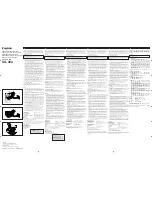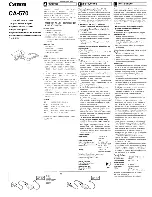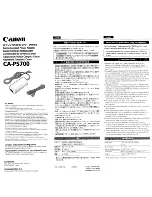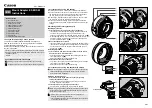
Fabric OS 6.2 administrator guide
63
Auditable events are generated by the switch and streamed to an external host through a configured
system message log daemon (syslog). You specify a filter on the output to select the event classes that are
sent through the system message log. The filtered events are streamed chronologically and sent to the
system message log on an external host in the specified audit message format. This ensures that they can
be easily distinguished from other system message log events that occur in the network. Then, at some
regular interval of your choosing, you can review the audit events to look for unexpected changes.
Before you configure audit event logging, familiarize yourself with the following audit event log behaviors
and limitations:
•
By default,
all
event classes
are configured for audit; to create an audit event log
for specific events
, you
must explicitly set a filter with the
class
operand and then enable it.
•
Audited events are generated specific to a switch and have no negative impact on performance.
•
If you are running Fabric OS versions earlier than 6.0, all Secure Fabric OS events are audited.
•
Events are not persistently stored on the switch but are streamed to a system message log.
•
The audit log depends on the system message log facility and IP network to send messages from the
switch to a remote host. Because the audit event log configuration has no control over these facilities,
audit events can be lost if the system message log and IP network facilities fail.
•
If too many events are generated by the switch, the system message log becomes a bottleneck and
audit events are dropped by the Fabric OS.
•
If the user name, IP address, or user interface is not transported, an audit message is logged by adding
the message None to each of the respective fields.
•
For High Availability, the audit event logs exist independently on both active and standby CPs. The
configuration changes that occur on the active CP are propagated to the standby CP and take effect.
•
Audit log configuration is updated through a configuration download.
Auditable event classes
Before configuring an audit log, you must select the event classes you want audited. When enabled, the
audit log feature audits any RASlog messages (system message log) previously tagged as AUDIT in Fabric
OS 6.0. The audit log includes:
•
SEC-3001 through SEC-3017
•
SEC-3024 through SEC-3029
•
ZONE-3001 through ZONE-3012
Table 6
identifies auditable event classes and the
auditCfg
command operands used to enable auditing
of a specific class.
Only the active CP can generate audit messages because event classes being audited occur only on the
active CP. Audit messages cannot originate from other blades in an enterprise-class platform.
Table 6
AuditCfg event class operands
Operand Event class
Description
1
Zone
Audit zone event configuration changes, but not the actual values that
were changed. For example, a message may state, “Zone configuration
has changed,” but the syslog does not display the actual values that were
changed.
2
Security
Audit any user-initiated security events for all management interfaces. For
events that have an impact on an entire fabric, an audit is generated
only for the switch from which the event was initiated.
3
Configuration
Audit configuration downloads of existing SNMP configuration
parameters. Configuration uploads are not audited.
4
Firmware
Audit firmware download start, firmware complete, and any other errors
encountered during a firmware download.
5
Fabric
Audit administrative domain-related changes.
Summary of Contents for A7533A - Brocade 4Gb SAN Switch Base
Page 1: ...HP StorageWorks Fabric OS 6 2 administrator guide Part number 5697 0016 Edition May 2009 ...
Page 24: ...24 ...
Page 99: ...Fabric OS 6 2 administrator guide 99 ...
Page 100: ...100 Managing user accounts ...
Page 118: ...116 Configuring standard security features ...
Page 164: ...162 Configuring advanced security features ...
Page 234: ...232 Installing and maintaining firmware ...
Page 268: ...266 Administering advanced zoning ...
Page 284: ...282 Configuring Enterprise class platforms ...
Page 292: ...290 Routing traffic ...
Page 294: ...292 Interoperability for merged SANs ...
Page 302: ...300 Configuring the Distributed Management Server ...
Page 334: ...332 iSCSI gateway service ...
Page 340: ...338 Administering NPIV ...
Page 407: ...Fabric OS 6 2 administrator guide 405 ...
Page 408: ...406 Using the FC FC routing service ...
Page 438: ...434 Administering extended fabrics ...
Page 460: ...456 Administering ISL trunking ...
Page 516: ...512 FICON fabrics ...
Page 526: ...522 Configuring and monitoring FICON Extension Services ...
Page 540: ...536 Configuring the PID format ...
Page 544: ...540 Understanding legacy password behavior ...
Page 546: ...542 Mixed fabric configurations for non merge SANs ...
Page 550: ...546 Migrating from an MP Router to a 400 MP Router ...
Page 558: ...554 Inband Management ...
Page 572: ...568 ...
















































